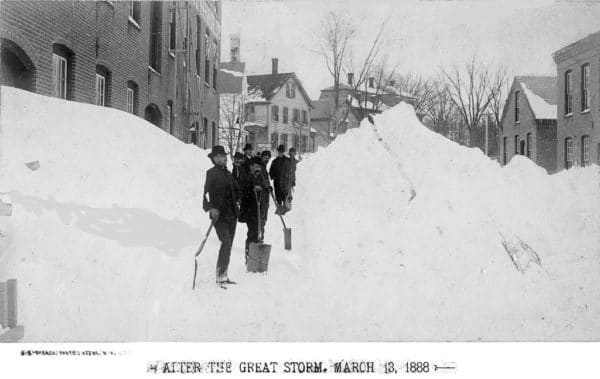

Right now, a large swath of the Northeastern United States is preparing for what is being described as a “Crippling, ‘potentially historic” blizzard.
Some are saying the weather event could rival the Great Blizzard of 1888, which dumped between 50 to 150 centimetres of snow on New York, New Jersey, Connecticut and Massachusetts. Others think it could top the 68cm that dropped on New York in 2006.
Tonight, New York’s entire subway system will shut down at 11pm and no one will be allowed on the roads after that time, either. Uber, presumably looking to pitch in, has capped its surge pricing rate at 2.8 times the normal fare, after meeting with New York Governor Cuomo. More than 5000 flights in and out of the Northeast have been cancelled. In news clips, grocery stores are shown with mostly barren shelves.
“You cannot underestimate this storm. It is not a regular storm,” warned New York Mayor Bill de Blasio today. “What you are going to see in a few hours is something that hits very hard and very fast.”
But what if the storm that some are already calling the “worst snowstorm in history” simply never materializes? What if it turns out to be a garden variety snow day? Of course, for safety reasons everyone should prepare as thought the storm will hit even harder than expected.
We’ve experienced record loss of Arctic sea ice and … when that happens it can influence the jet stream to allow more frequent plunges over the eastern part of the U.S.
But the fact is that no one really knows exactly how hard the storm will hit because predicting weather, especially in the part of the United States in which the blizzard is expected to hit tonight, has become especially difficult of late. Why? Because the jet stream, a small band of strong winds that shapes the weather, has destabilized due to the warming of the Arctic.
“There is no doubt that the recent weather has been highly changeable – on both sides of the Atlantic,” Reading University meteorologist Nicholas Klingaman of Reading University told The Guardian in 2013. “We have blizzards and flooding. America has had droughts and scorching temperatures. Its behaviour has changed dramatically in the past few years and has produced these lengthy bouts of extreme weather.”
Of course, the lack of predictability means the anticipated blizzard could be worse than expected.
“We’ve experienced record loss of Arctic sea ice and … when that happens it can influence the jet stream to allow more frequent plunges over the eastern part of the U.S., said Jeff Masters, director of meteorology at Weather Underground recently. Masters explains that last year’s huge storms were caused by the waves of the jetstream moving vertically and then getting stuck in place, instead of its normal pattern of circling the Northern Hemisphere.
And there’s another reason no one really knows how hard the east coast will get hit this week.
“Predicting snow is harder than anything else,” says the BBC’s Rhian Haf. “Most precipitation falls out of the sky as snow to start with, but it melts to rain.”
With New York temperatures hovering around the freezing mark for the next forty-eight hours, the effect of “crippling and potentially historic” storm is really anybody’s guess.
Leave a Reply
You must be logged in to post a comment.




 Share
Share Tweet
Tweet Share
Share




Comment